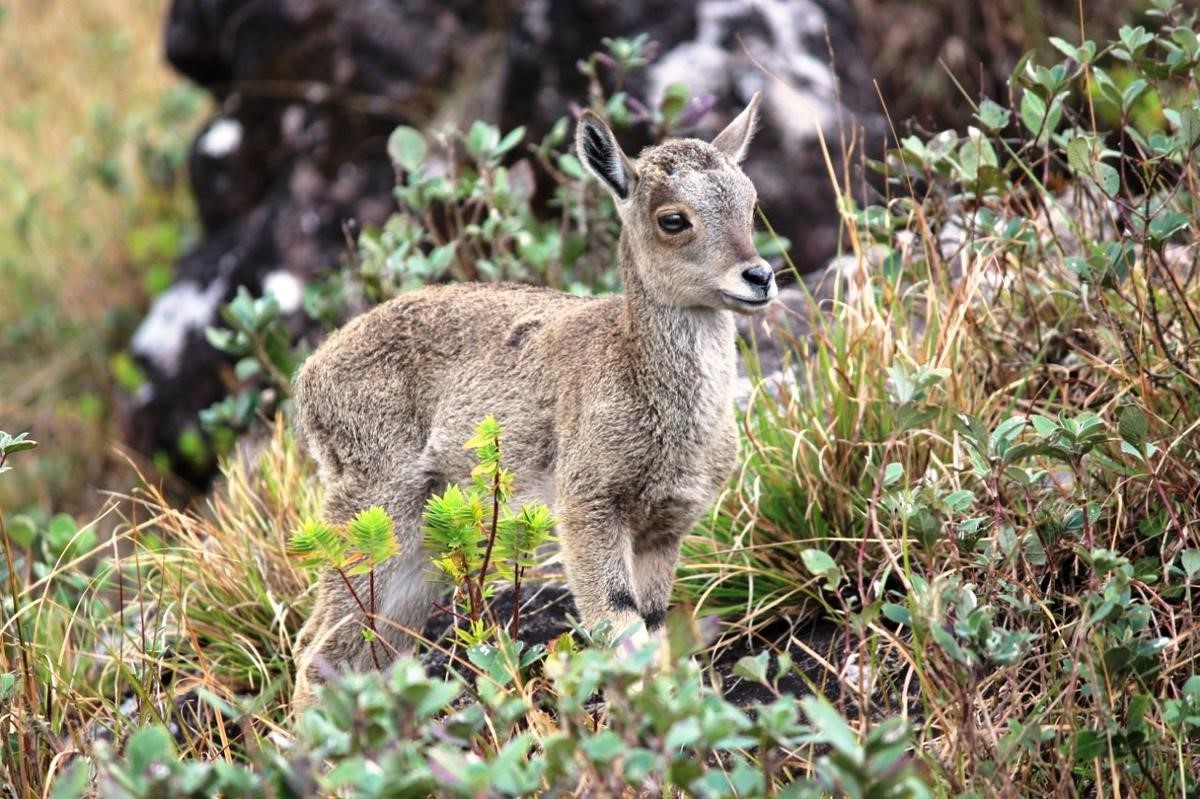Description

Disclaimer: Copyright infringement not intended.
Context: Eravikulam National Park (ENP) in Munnar in Idukki, a natural habitat for the endangered Nilgiri tahr, has witnessed an early onset of the breeding season with two tahr births, even as the authorities are preparing to close the park on January 31.
Details:
What is Nilgiri Tahr?
- Hemitragus hylocrius is an endangered species and the sole Caprinae species found in the tropical mountains of southern India.
- The animal inhabits meadows with steep cliffs at elevations between 300 meters and 2,600 metres above sea level.
- It is estimated that there are 3,122 Nilgiri Tahrs in the wild.
- Historically, the Nilgiri Tahr was known to inhabit a large portion of the Western Ghats.
- But today it remains restricted to a few scattered patches in Tamil Nadu and Kerala. It has become locally extinct in around 14% of its traditional shola forest-grassland habitat.
- IUCN – Endangered, Wildlife (Protection) Act of India, 1972 - Schedule I

Eravikulam National Park:
- Perched 7000 ft. above sea level, is break-taking in the size and diversity of flora and fauna.
- A former hunting preserve of the British planters, the Park today exemplifies wildlife at its best.
- It was declared a Sanctuary in 1975 with the intention of protecting the indigenous population of Nilgiri Tahr (highly endangered mountain goat). However, in 1978, it was declared as a National Park considering it’s ecological, faunal, geomorphological and Zoological Significance.
- This is also the land of “Neelakurinji”, the flower that blooms once in twelve years.
- The Park is breathtakingly beautiful and is easily comparable to the best of mountain ranges in the Alps.
- With the highest peak south of the Himalayas – the Anamudi, located here, nature enthusiasts have ample opportunities for trekking expeditions and wildlife spotting.
- The Park covers an area of 97 Km2 of rolling grasslands and high level sholas.
- The terrain is undulating with grass, hillocks, and sholas. In addition, the highest peak south of the Himalayas – The Anamudi, which is 2695 meters in height is situated on the southern side of the Park.
.jpeg)
Vegetation: The major part of the park is covered with rolling grasslands, but several patches of shola forests are also found in the upper part of the valley. Important flora includes Actinodaphne bourdilloni, Microtropis ramiflora, Pittosporum tetraspermium, Sysygium aronottianum, Chrysopogon Zelanieus, Eupatorium adenophorum, Strobilanthus Kunthianus (Neela Kurinji), Eulalia phaeothrix, Tripogen bromodes, Arundinella fuscata, Cyanotis Species etc.
Wildlife Population: 29 Species of mammals are found here of which 5 are endemic to the Western Ghat’s. The Nilgiri Tahr, Gaur, Sloth Bear, Nilgiri Langur, Tiger, Leopard, Giant Squirrel and wild dog are common. Half the world population of the endangered Nilgiri Tahr lives here. Panthers are usually sighted in the open grasslands while Civet cats and Jungle cats live in the Sholas. The Atlas moth, the largest of its kind in the world is seen in this Park. More than 100 varieties of butterflies have been recorded here. Besides 20 species of amphibians are also seen.

https://www.thehindu.com/sci-tech/energy-and-environment/in-a-first-enp-reports-nilgiri-tahr-birth-in-december/article66420336.ece












